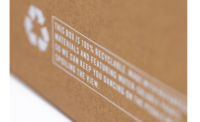
To understand what is and will be driving change in packaging over the next half decade, it is imperative to realize where-and-how packaging is consumed and how this consumption is changing. This was the premise of a study commissioned by PRIMIR and authored by Karstedt Partners in 2012, titled “Packaging: Evaluation of Vertical Markets and Key Applications” (2011 to 2015). The report looks at the driving issues brand owners must address in order to grow their business, and how these issues shape their decisions around packaging.
In North America, changing demographics are causing massive shifts in how products are developed, marketed, distributed and packaged. Baby boomers, now 76 million people strong, by 2015 are projected to control 53 percent of $706 billion spent on groceries. Male boomers are now living to almost 75 years of age and female boomers are living to nearly 80.
Changing Order Patterns
These changes in consumer purchasing habits are causing a shift in how and even where brand owners produce their product, forecast, order and consume labels and packaging materials. Below is a classic bell curve showing how order distribution has historically developed.
For many converters, the center of the curve, mainline long run orders, represent as much as 80 percent of their production volume, and as few as 20 percent of their job orders. Industry participants have historically aligned themselves with mainline long run orders, and corporate focus has driven improvement programs designed at making this volume work as efficiently and profitably as possible.
The curve below illustrates how the total volume produced remains the same, however the total number of orders, as well as the distribution of those orders has changed significantly. The number and frequency of mainline orders has decreased dramatically, while the number and frequency of orders for innovation, event marketing, low volume SKUs (stock keeping units) and end-of-life products have increased.
The traditional packaging supply chain challenge was to manage scale; the new challenge is to continue to manage scale while also managing scope. Industries with an infrastructure tailored for volume (scale), typically have a difficult time adding capabilities for speed, flexibility and convenience (scope). This problem creates opportunities for new entrants that can more effectively manage the scope as well as the scale of orders.
Everyone agrees, this shift in order volume, often simplistically referred to as SKU proliferation, is the “new norm”. Participants all through the packaging supply chain are working to re-engineer their businesses to better manage these shifts in order volume and frequency.
Another buzzword of our times, convergence, is happening in Chicago this fall that will aid those in the packaging supply chain in dealing with these re-engineering challenges. The strongest graphics and imaging show in North America, the global PRINT 13 show will welcome co-located CPP EXPO (Converting and Package Printing Expo).
These foremost industry exhibitions will bring the package printing and converting communities together and provide a unique opportunity to address many of the issues they will face over the next decade. Everything from graphic design and prepress to package printing and converting will be available to see and “kick the tires,” all in one place – at PRINT 13.
About the Author
Kevin Karstedt is CEO of Karstedt Partners, LLC.
Karstedt Partners
PRIMIR




